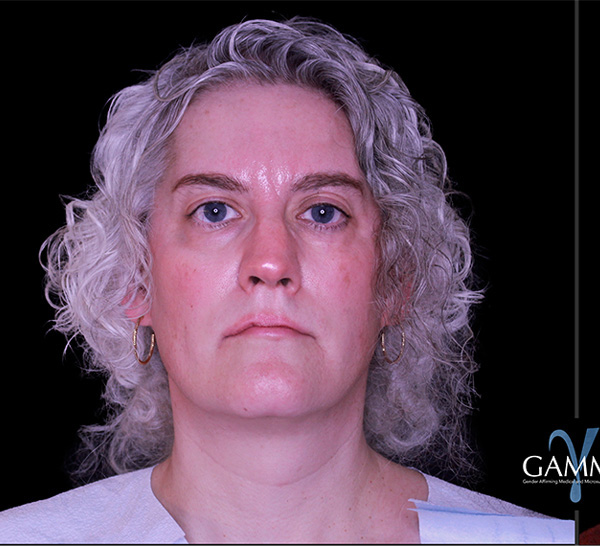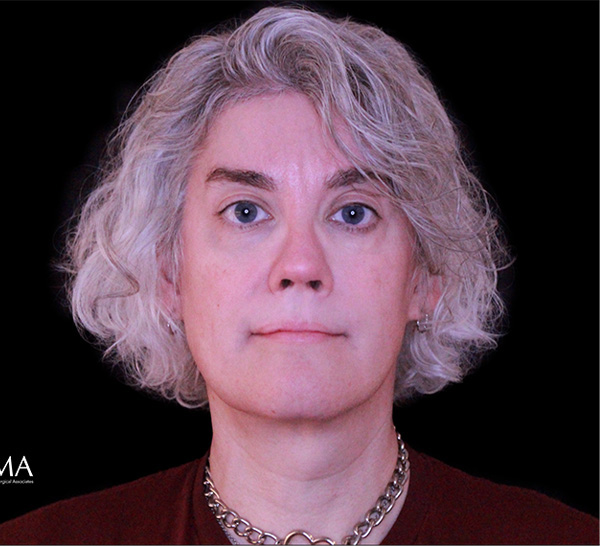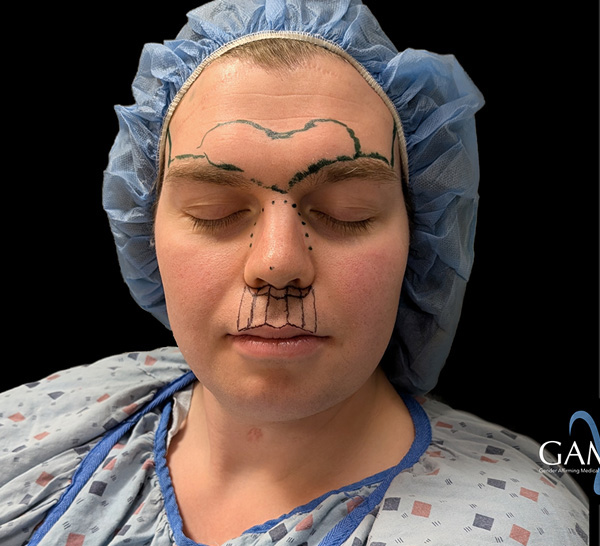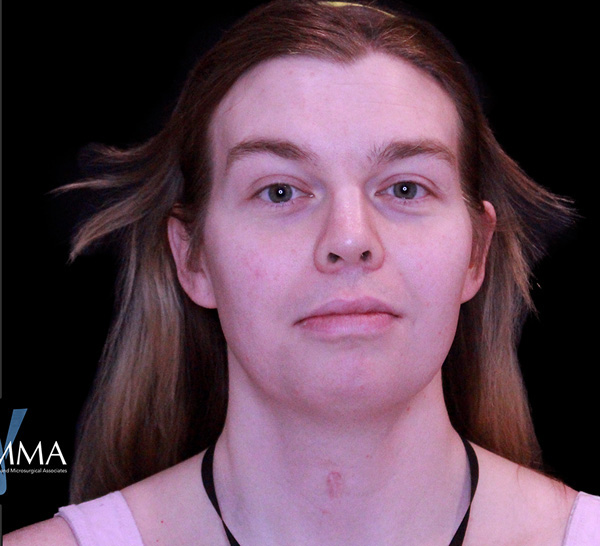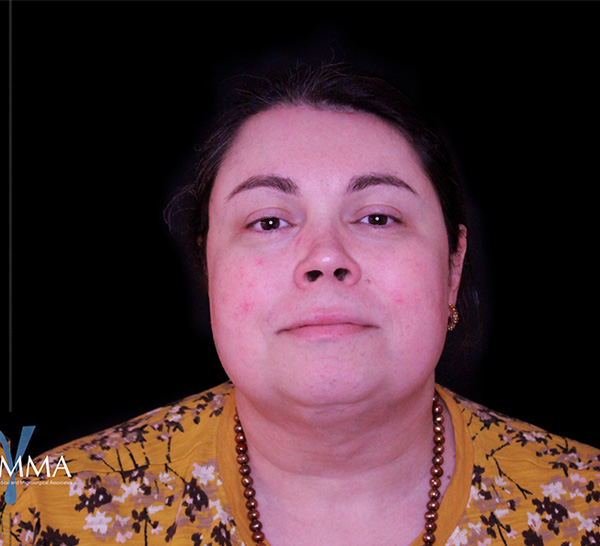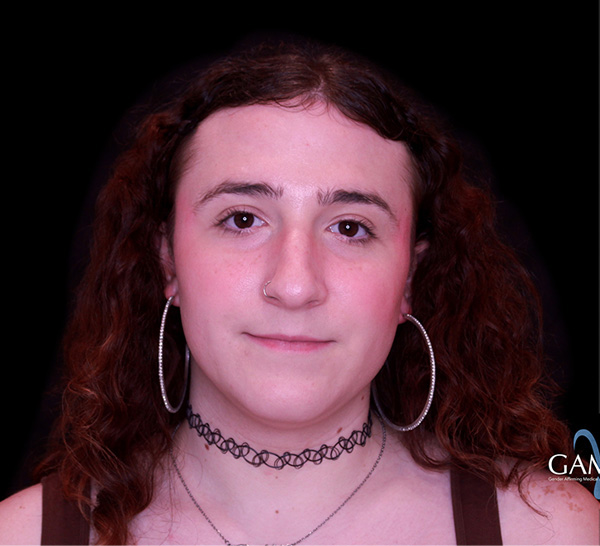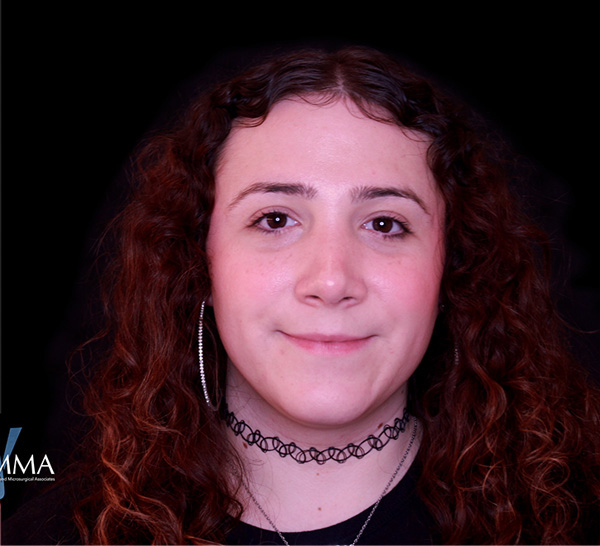What Is a Brow Bone Reduction and Orbital Contouring?
Brow bone reduction is a procedure aimed at reducing the prominence of the brow ridge, which is often considered a masculine feature. The brow ridge is reshaped to create a smooth, more convex forehead. Orbital contouring is performed to refine the bone structure around the eyes, making them appear larger and reducing the amount of shadow around the eyes. Together, these procedures soften sharp angles and enhance the femininity of the face by creating a more balanced facial profile.
Surgical Procedure
The approach for brow bone reduction and orbital contouring depends on the type of forehead anatomy. Most patients have a Type 3 forehead, which features a prominent frontal bone that requires frontal sinus setback to achieve a more feminine contour. This procedure involves moving the frontal sinus backward to smooth the brow and reduce prominence. In some cases, Type 1 foreheads, characterized by a non-pneumatized frontal bone (meaning the frontal sinuses are not present or poorly developed), can be treated by directly burring or shaving the bone down without needing sinus setback.
For both types, orbital contouring is performed by burring the superolateral orbits, which softens the edges around the eyes and opens up the orbits. This change not only improves the aesthetics of the brow but also allows more light into the eyes, creating a more open, youthful, and feminized appearance.
Incisions for the surgery are typically made in either a pretrichial (along the hairline) or coronal (behind the hairline) approach. The choice of incision depends on whether hairline advancement is necessary, with pretrichial (hairline) incisions used for patients who also require a lower hairline, and coronal (behind the hairline) incisions for those whose hairline is already appropriately positioned.
Who Are the Best Candidates?
Orbital contouring is an excellent option for facial feminization patients who wish to reshape their upper facial profile to better reflect their unique individuality and gender expression. It can be performed on MTF, nonbinary, and gender nonconforming individuals seeking a softer look in the brow, forehead, and eyes. Multiple variables are involved in determining candidacy for the procedure. Patients with medical issues that could heighten the risk of complications may not qualify for brow bone reduction in NYC.
Dr. Marano and Dr. Keith will conduct a private consultation that includes a detailed physical assessment and medical review to ensure no contraindications are present and that the surgery will be safe, successful, and rewarding for you.
You may not be a good candidate for orbital contouring in at GAMMA in New York City and New Jersey if you have any of the following characteristics:
- You are a heavy drinker, drug user, or smoker
- You have uncontrolled diabetes or hypertension
- You suffer from a bleeding or clotting disorder
- You struggle with lung or heart disease
- You have an active sinus infection or sinusitis
- You’ve had previous trauma in the upper facial area
- You’ve undergone previous sinus surgeries
How Should I Prepare for Orbital Contouring?
The first step in orbital contouring is to meet with Dr. Marano or Dr. Keith for a private consultation at GAMMA in New York City or New Jersey. During this time, you will discuss your goals and medical history with our team, who will then create a customized treatment plan according to your unique anatomy, comfort levels, and goals. Prior to consultation, you should ensure the following:
- Provide Mental Health Letter – Many insurance providers and surgical guidelines require a letter from a qualified mental health professional confirming a diagnosis of gender dysphoria and the patient’s readiness for surgery. This letter should follow WPATH (World Professional Association for Transgender Health) standards and address the patient’s understanding of the procedure and its implications. Our team will assist in ensuring the proper language is used and the provider is appropriately credentialed
- Quit Smoking – Nicotine constricts blood vessels and significantly increases the risk of complications, including poor wound healing and tissue loss. Patients must stop using all nicotine products—including cigarettes, vapes, nicotine patches, and gum—at least 4-6 weeks before and after surgery.
- Manage Medications – You may be asked to discontinue certain medications that increase surgical risks.
- Well-Controlled Medical or Mental Health Issues / Medical Clearance – To ensure safe surgery and recovery, patients with underlying medical conditions such as diabetes, high blood pressure, or psychiatric conditions should have them well-managed. Medical clearance from a primary care provider or specialist is required.
- BMI Cutoff – There is no strict BMI cutoff for FFS at GAMMA. Every patient is evaluated individually, considering overall health and surgical goals rather than BMI alone.
- Insurance Coverage – GAMMA works with various insurance providers to help patients access gender-affirming surgery. Our team assists with insurance verification, prior authorization, and necessary documentation. Patients should check with their insurance carrier regarding coverage criteria, including mental health letters and medical clearance requirements.
- Complete Your Consultation – You will undergo a detailed consultation with Dr. Marano or Dr. Keith to ensure your expectations are realistic and your health supports the treatment process. Our team will discuss the risks and benefits, recovery and results, of FFS.
- CT Scan for Virtual Surgical Planning: A CT scan will be performed before the surgery to help the surgeon assess the anatomy of the frontal sinus and brow. This scan provides detailed images that guide the surgical approach via virtual surgical planning.
What is Virtual Surgical Planning (VSP)?
Virtual Surgical Planning (VSP) is an advanced, cutting-edge technology that allows surgeons to plan facial feminization surgeries with extreme precision and accuracy. This process involves creating a 3D reconstruction of the patient’s facial skeleton, which provides a detailed and accurate representation of the bone structure. Using this 3D model, the surgeon can plan the post-operative bony structure and make decisions about the necessary adjustments.
One of the key benefits of VSP is its ability to provide millimeter-level accuracy in surgical planning, ensuring that the changes made to the facial bones are tailored to the patient’s unique anatomy and desired outcomes. The surgeon uses custom 3D-printed cutting guides and plates, which are created specifically for the patient based on the virtual plan. These guides and plates help the surgeon achieve precise cuts during the procedure, reducing the risk of complications and improving the consistency of results.
VSP is particularly beneficial in complex surgeries, such as brow bone reduction and orbital contouring, where the margins for error are minimal. By using this technology, the surgeon can optimize the approach, anticipate potential issues, and achieve the most aesthetically pleasing and functional outcomes for the patient.
What to Expect On the Day of Surgery
On the day of surgery, you will arrive early for preoperative check-in, and the surgeon will review the surgical plan. The procedure is performed under general anesthesia. In many cases, brow bone reduction and orbital contouring are performed in conjunction with other facial feminization procedures, and you may require an overnight hospital stay for monitoring.
Recovery & Results
Recovery time varies for each patient and depends on several factors, including the individual’s healing ability, the specific techniques utilized, and whether brow bone reduction is combined with other treatments or procedures.
- Hospital Stay: Most patients will spend 1-2 nights in the hospital after surgery, especially if additional FFS procedures are performed.
- Swelling & Bruising: Expect swelling and bruising around the forehead and eyes, which will peak within 2-3 days and gradually improve over 2-3 weeks. Final swelling may take several months to resolve.
- Activity Restrictions: You will need to avoid strenuous physical activity for 2-4 weeks, especially lifting and bending, which could increase swelling or put stress on the healing tissues. It is important to sleep with the head elevated, either in a recliner or with multiple pillows, to limit facial swelling.
- Return to Work: Most patients can return to work 4 weeks after surgery, depending on the nature of their job and comfort level.
- Final Results: The final aesthetic results of brow bone reduction and orbital contouring may take up to 12-18 months to fully manifest, as swelling continues to subside and tissues heal.
In terms of results, patients may notice a flatter brow surface right away after surgery. Swelling and bruising can temporarily obscure your final results, however. Rest assured, within a few months, you will start seeing dramatic improvements that only improve with time as you heal.
Insurance Considerations & Requirements
Insurance carriers will typically cover gender affirmation surgery, including facial feminization surgery, when it is performed to treat gender dysphoria, a condition in which the patient’s outer traits do not reflect their authentic gender identity. You’ll need a letter from a mental health provider detailing your decision to undergo FFS. Our team can go over the insurance requirements in greater detail during your consultation.
Traveling from Outside the NYC Area
- Resources – For patients traveling to NYC for surgery, GAMMA provides recommendations for LGBTQ+ friendly accommodations, post-op caregivers, and recovery services. Our team can also assist with logistics such as medical transport and aftercare arrangements.
- Requirements – Out-of-town patients must plan to stay in NYC for at least two weeks after surgery to ensure proper healing and attend necessary post-operative appointments. We encourage having a trusted friend, family member, or professional caregiver for the first few days post-surgery.
What Sets Us Apart?
Our team at Gender Affirming Medical and Microsurgical Associates (GAMMA) in New York City and New Jersey is known for providing the highest-level care in an affirming environment. We utilize today’s most progressive and cutting-edge techniques to provide the highest level of service possible. Our goal is to help transgender, nonbinary, and gender nonconforming individuals achieve their unique appearance goals and thrive with confidence, security, and peace of mind.
Dr. Drew Marano
Dr. Drew Marano is an accomplished, board- certified, and fellowship-trained plastic and reconstructive surgeon who has devoted his career to the art of gender affirmation surgery. He graduated from Rutgers New Jersey Medical School at the top of his class, receiving AOA honors before embarking on a competitive six-year Integrated Plastic and Reconstructive Surgery Residency at Columbia University/Cornell University in New York City. Following his residency, Dr. Marano was selected as the first-ever Harvard University Complex Gender and Microsurgery Fellow, during which time he underwent advanced training in groundbreaking and innovative surgical techniques. He is a prolific author, researcher, and lecturer who has contributed to over 40 publications and presentations at regional and national meetings. Dr. Marano offers ongoing support for transgender patients as they navigate their unique and rewarding journey of transitioning.
Dr. Jonathan Keith
Dr. Jonathan Keith is a renowned, fellowship-trained, board-certified plastic surgeon known for his progressive approach to microvascular surgery. He is an active member of the World Professional Association for Transgender Health and the founder of the Rutgers Center for Transgender Health. In 2018, Dr. Keith created the first multidisciplinary clinical program for transgender patients in New Jersey and was the first surgeon in the state to perform a female-to-male phalloplasty for gender affirmation. Regarding his extensive educational background, Dr. Keith completed a demanding seven-year residency at the University of Pittsburgh, one of the nation’s most elite and well-regarded plastic surgery training programs. As a testament to his skill and artistry, in 2012, he received the Stephen S. Kroll Fellowship in microsurgery at the University Hospital of Gent, Belgium. Today, Dr. Ketih performs a range of complex and delicate procedures to assist transgender and nonbinary individuals in achieving their ideal appearance, including DIEP flaps for breast reconstruction, vaginoplasty, and phalloplasty.
What Are the Risks Associated with Orbital Contouring?
The likelihood of complications with orbital contouring is greatly reduced by choosing fellowship-trained, board-certified surgeons such as Dr. Marano and Dr. Keith in New York City and New Jersey. However, the procedure does come with certain inherent risks to be aware of. These include the following:
- Bleeding – While uncommon, excessive bleeding can occur during or after the procedure.
- Infection – As with any surgery, there is a small risk of infection, which is usually managed with antibiotics.
- Mucocele – A rare complication where mucus accumulates in a sinus cavity, requiring further treatment.
- Bone Resorption – Rarely, the bones may not heal as expected or may absorb unevenly over time.
- Scalp Numbness – Some patients experience temporary numbness in the scalp area due to nerve irritation during surgery.
- Swelling/Bruising – Swelling and bruising are expected but will resolve over time.
- Pain – Postoperative pain is typically mild to moderate and managed with prescribed pain medications.
